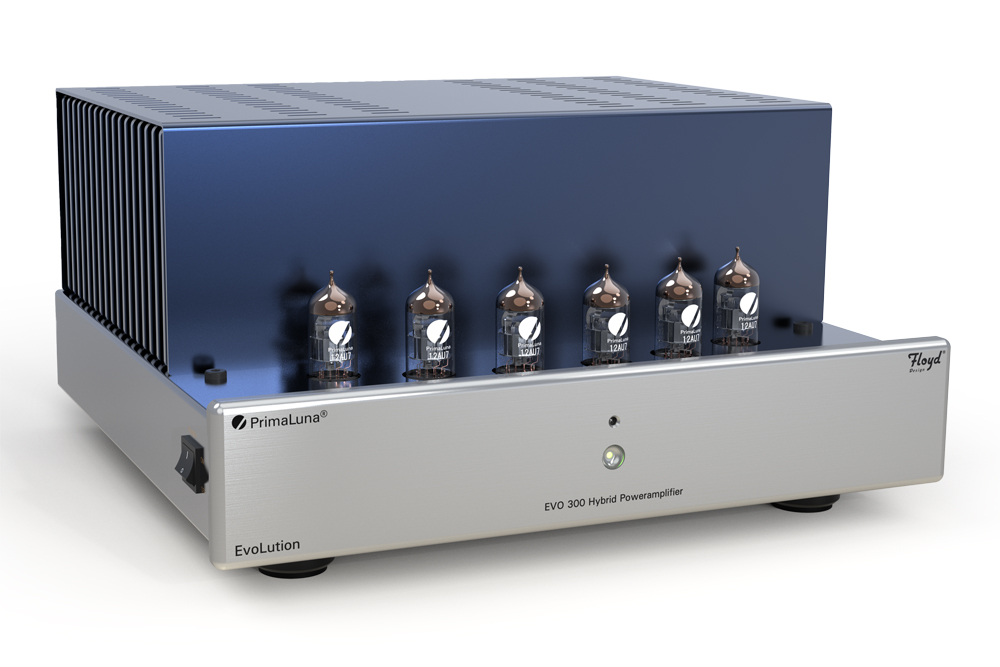The best of both worlds… such an attractive concept. Merge the positives and strengths of divergent philosophies, varying points-of-view, in order to form what could potentially be a superior outcome. That was the core basis for the development of the EVO 300 Hybrid power amplifier from renowned electronics specialist PrimaLuna. The company’s engineers must have considered, “Is it possible to fuse ideals and technologies in the one product?” Could marrying the rich tonality and naturalness of vacuum tubes with the power, authority and dynamic expression of solid state circuitry unify into a single, truly exceptional amplifier?
Lunarscape
While PrimaLuna’s flagship ‘EvoLution’ line has featured hybrid amplification products, including the current EVO 300 Hybrid Integrated Amplifier, the EVO 300 Hybrid Poweramplifier presents yet another compelling case for the concept. The company has extensive experience in designing products featuring vacuum tube and solid state technologies, with the former by renowned designer Herman van den Dungen and the latter via a partnership with Floyd Design and the respected engineer Jan de Groot. Indeed, over the years, PrimaLuna has received universal recognition and acclaim for its high performance, well engineered, precisely built, and affordable electronics. Taking that broad knowledge and merging it into a Hybrid topology was a natural alternate path. Building upon the original’s 2021 debut, PrimaLuna introduced the second-generation EVO 300 Hybrid in late 2024 with an aim to enhance its predecessor’s strengths with refined circuitry, updated componentry, and more.
OK, on paper, the hybrid concept of melding two circuit technologies into one may sound… challenging in terms of a successful marriage, yet EVO 300 Hybrid power amplifier is actually a minimalistic design which capitalises on engineering elegance and a simple aesthetic.
The circuit is based a merging of six PrimaLuna ‘Silver Label’ 12AU7 valves driving the input/line stage (JFETs are also employed in the circuitry) and a “double pair” of factory-matched MOSFET output devices. This rates the EVO 300’s output power at 100 watts per channel into 8 ohms and 150 watts per channel into 4 ohms. If configured as monoblock amplifiers, the output, umm… amps up to 220 watts into 8 ohms and 300 watts into 4 ohms.

On specifications, the EVO 300 Hybrid power amplifier features a Frequency Response between 10 Hz and 80 kHz at +/- 3dB, while the Total Harmonic Distortion (THD) is said to be under 0.2% at 100 watts for 8 ohms in stereo mode and 0.2% at 245 watts for 8 ohms in mono mode. Signal-to-Noise Ratio (SNR) is given as -105dB (A-Weighted) while the amplifier’s input impedance is 32 kohm via RCA and 49 kohm via XLR in stereo and 18 kohm through RCA and 50 kohm through XLR in mono mode.
The EVO 300’s rear panel houses the function switching and connectivity options. From left-to-right, we have two side-by-side switches to select XLR or RCA and Stereo/Mono options. The input section offers unbalanced RCA and balanced XLR, with one bank dedicated to mono operation. Further to the right is a Low/High gain switch providing 24dB or 30dB settings which is very handy for preamplifier gain matching. Good quality plastic-sheathed speaker binding posts, a 12V trigger On/Off switch coupled to mini-jack In/Out ports, and an IEC socket round out the connecting options. Simple, yet appropriate.
PrimaLuna’s design team has engineered a robust power supply, reflecting the commitment to performance and reliability. There’s an independent high-voltage power supply for each valve and each of the amplifier’s channels. Also featured are large power transformers and a sizable capacitor bank (six 10K microfarad Rubycon capacitors per channel) while each power stage includes stout protection circuits including dual “inrush” protection circuitry.
In addition to the abovementioned Silver Label valves, the list of high quality componentry includes Swiss DuRoch tinfoil capacitors, Japanese Takman resistors and custom heavy-duty anti-resonant PCBs featuring thick copper tracks. It’s evident that the bulk of the EVO 300 Hybrid power amplifier’s production budget has gone into the parts quality. The sum of these components makes for high reliability and excellent potential sonic performance.
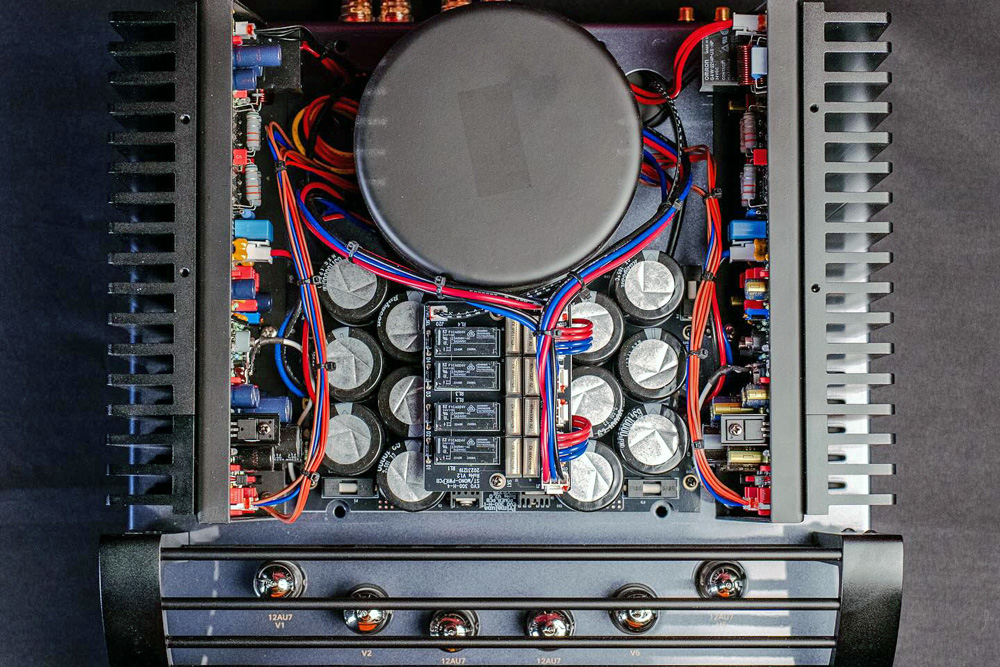
In terms of its aesthetic design, while there’s a rudimentary elegance behind the EVO 300’s styling simplicity, the unit’s handcrafted build quality is confidence inspiring. The plain front panel is constructed from a solid piece of anodise aluminium (available in black or silver) with two small operating lights and the usual model and company descriptors. The chassis’ side panels are heavy gauge, folded and painted (five coats) steel, with the left hand side housing the On/Off switch. The top panel accommodates the six 12AU7 valves which are protected from inquisitive fingers by a curved removable cage.
Flicking the power switch sees the front panel’s central LED light up red while the EVO 300 amplifier goes through pre-operational and protection status cycles. Once all is verified to be AOK, the LED lights up green and you’re good to go.
I’m Dancing in the Moonlight; It’s Caught Me in its Spotlight – Phil Lynott
I should start by just laying this down from the get-go. PrimaLuna has delivered the mandate as promised. The EVO 300 does, indeed, coalesce the positives of both valve and solid state amplification devices.
So, upon firing up the amplifier and allowing for a warmup period at background music level, I sat down for my very first critical appraisal of this rather promising amplifier. Promise kept. EVO 300 sounded dynamically expressive and well controlled through the ample bass (yeah, solid state) while infusing a delightful open warmth and tonal richness through the midrange and high frequencies (like… valves).
Having said that, the nature of EVO 300’s performance offers more nuances than just the copasetic meeting of two tribes. The EVO 300’s formulation presents a number of other outstanding sonic characteristics than just the traditionally recognised.
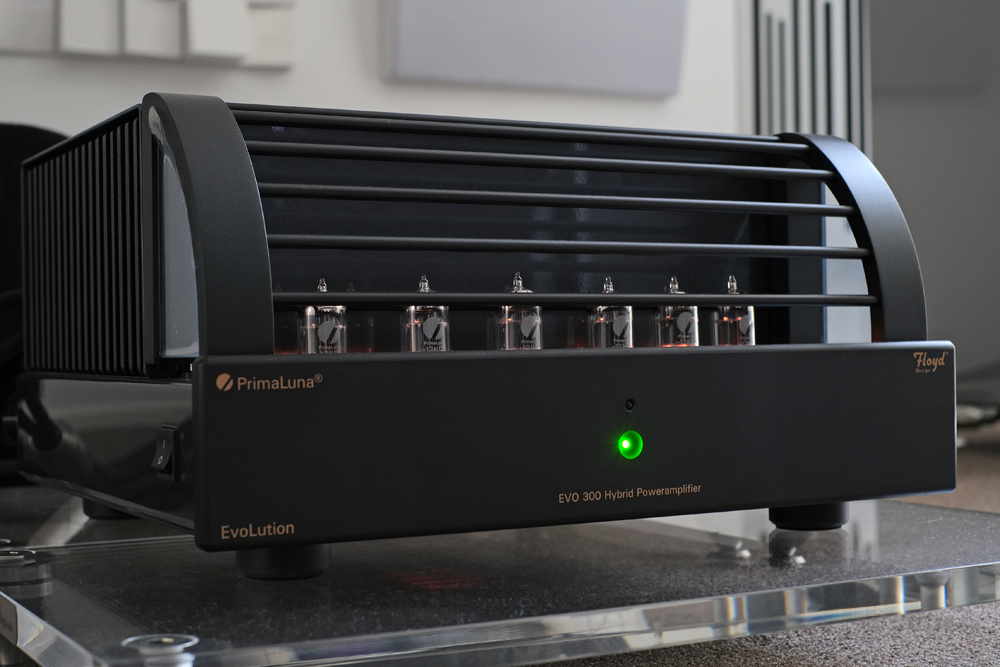
To illustrate soundfield and spatial reproduction, I usually jump to well produced live recordings I’ve become intimately familiar with over the years. Aside from the unfortunately cliched ones quoted in many ‘audiophile’ reviews, two of my go-to live recordings (among others) are Ani DiFranco’s Living In Clip and Ryan Adams’ Ten Songs From Live At Carnegie Hall.
On DiFranco’s “Amazing Grace”, I got extraordinarily well-rendered spatial cues in all dimensions. The audience’s coughs and cheers and general rowdiness seemed to emanate from beyond the walls of my studio in a way that enhanced the illusion of being at a venue experiencing a live performance. DiFranco’s voice reverberated and bounced across the “venue” in a superbly realistic way. Then, on more aggressive tracks such as “Willing to Fight” the drumming and guitar slammed without swamping DiFranco’s cutting vocals. Ditto for “I’m No Heroine” where the self-deprecating tension just keeps ebbing and flowing, with EVO 300 neither stunting the dynamic aggression nor congesting the instrumental and vocal strands.
As far as Adams’ performance, his regret and longing on “Sylvia Plath” are conveyed superbly. EVO 300 replicated the track’s piano and Adams’ pained vocals with both delicacy and poignancy. How does that happen, as far as an amplifier, you might ask? Well, in my experience, a great component, whether an electronic or acoustic device, offers qualities which synergise as a grouping and, in turn, also gel with the rest of the system. When that happens, the product/s communicate the artist’s and the music’s intent in a way that connects with the listener. Not something that can be measured, I’d say, but certainly something you feel. At least I do, and I’m sure many of you do too.
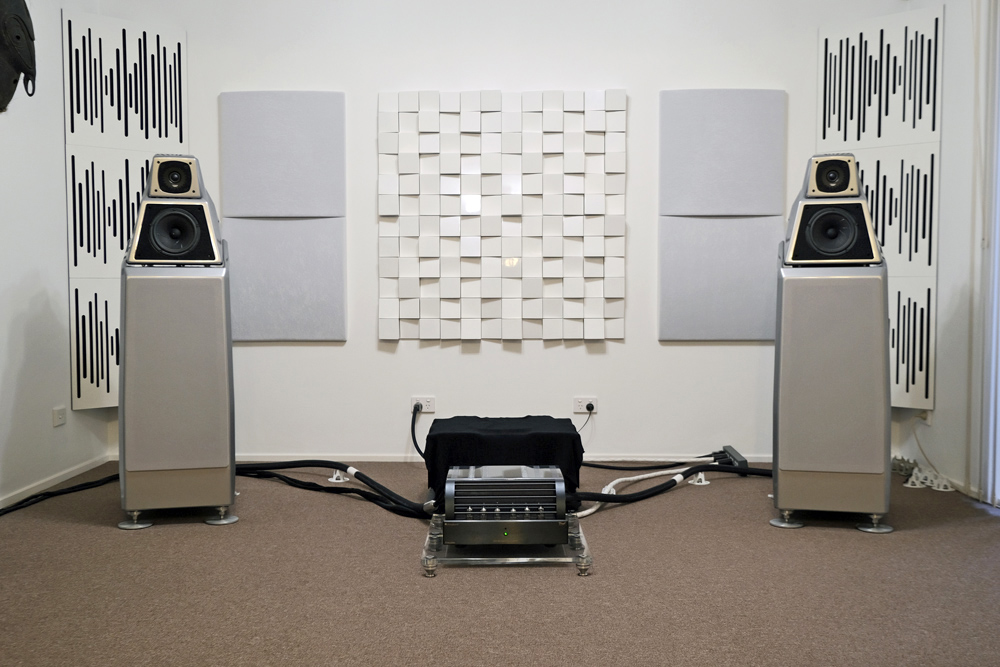
The EVO 300 Hybrid amplifier does tonality like a champ. There was real grit and bone and weight from José González’s forceful strumming on “Deadweight on Velveteen” from his Veneer (20th Anniversary Deluxe Edition) album. In addition, the amplifier expertly reproduced the metal strings’ harmonics while also accurately rendering the ‘woodiness’ and body of the acoustic guitar.
On Deutsche Grammophon’s Transcendental – Daniil Trifonov plays Franz Liszt, Trifonov’s piano shows all its tonal richness spanning the entire keyboard, left-to-right. The maestro’s delicate and sometimes more vigorous key stroking showed both the subtlety and the dynamic energy of the piano while the EVO 300 Hybrid’s tonal precision defines the instrument with natural timbre.
The same veracity was given to the nuanced instrumentalisations of the Tsuyoshi Yamamoto Trio’s “Tea For Two” on the What A Wonderful World album. The intro’s lone piano comes in with a short riff, then the delicacy of brushed swipes and taps on the drums is beautifully detailed. Even the micro-detail of the piano’s pedal lift (or is it a key hammer lift) is clearly communicated. Then, as the track progresses, the piano notes are sharply defined, fast and tight, as is the acoustic bass which underpins the wonderful track.
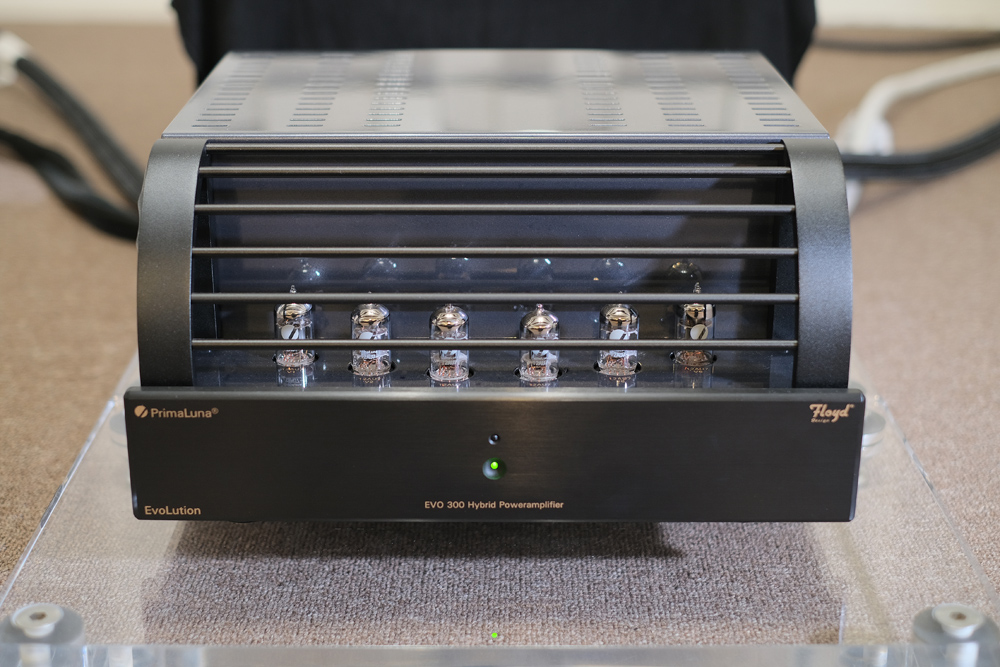
The EVO 300 Hybrid power amplifier’s weight through the midrange and its tight control of the lower registers makes for a very satisfying rock music experience. Spin something with gravitas, such as Deftones’ “Passenger” from the White Pony album and you’ll hear what I mean. The droning bass line, the massive guitar onslaught, the pounding of the kick drum and the mix-cutting snap of the snare were all portrayed with solidity and clean separation.
Conclusion
It’s evident what the PrimaLuna engineers were aiming for when designing the EVO 300 Hybrid Power Amplifier: an amplification instrument which could bridge and unite the qualities inherent in ‘glass’ and ‘sand’ topologies. Given the sonic properties on offer, it’s my belief that the target has been hit squarely in its bullseye.
The EVO 300 encapsulates the much-valued sonic character of valve technology, first introduced in amplification devices in the early 1900s by American innovator Lee de Forest. It represents the amplifier’s ‘right brain’. It’s a somewhat romantic, tonally rich, and emotionally resonant signature. Enhancing that aspect is the ‘left brain’, shaped by a newer design dating back to the 1960s, the now vintage solid-state technology contributing a different sensibility with its inherent precision, control, and insightful qualities.
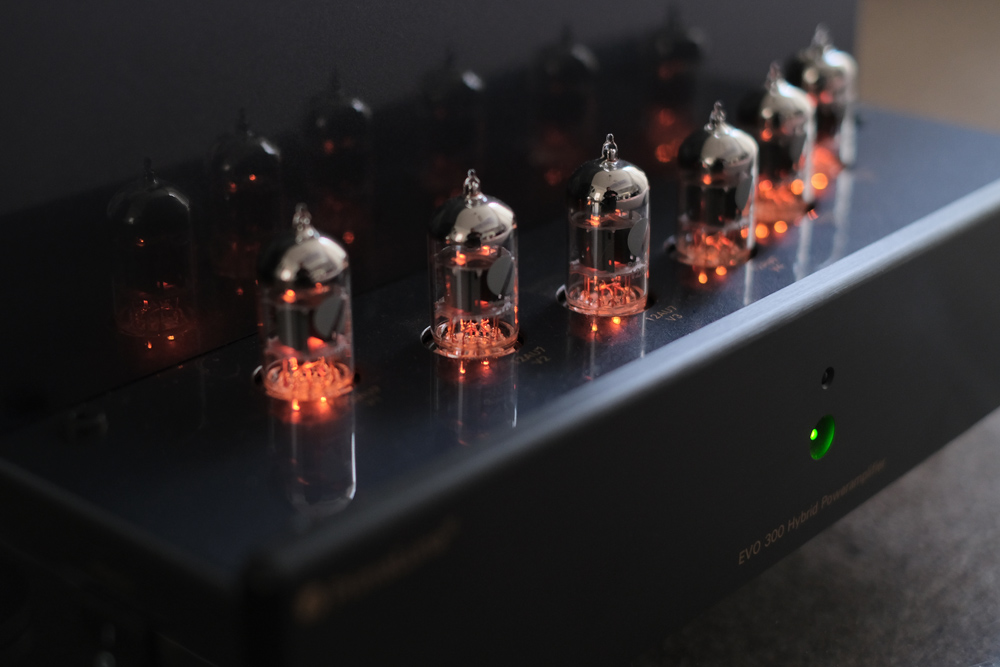
With those ‘brain hemispheres’ synergised, the EVO 300 presents a compelling case for sonic excellence. Plus, at its relatively affordable price point, PrimaLuna’s EVO 300 Hybrid Power Amplifier stands poised to bring high-end audio reproduction within reach of a broad and what should surely be a receptive network of music lovers.
… Edgar Kramer
This email address is being protected from spambots. You need JavaScript enabled to view it.
Associated Equipment
- Speakers— Wilson Audio Alexia V, Axis Loudspeakers VoiceBox S (nearfield monitor), Vermouth Audio Little Luccas Mk.II Limited Edition, Atacama stands
- Amplifier— Gryphon Audio Antileon EVO
- Preamplifier— Supratek Cortese, Totaldac d1-triunity (periodically, direct to amplifier)
- Sources— Digital: 432 EVO Aeon Mk.3 Reference Music Server/Roon Core, Yamaha CD-S2100 transport, Totaldac d1-triunity DAC. Analogue: Transrotor Crescendo with Konstant Studio controller, Reed 1X Tonearm with upgraded internal wiring, Shelter Harmony cartridge, The Funk Firm Houdini cartridge decoupler, Supratek Cortese & REDGUM Audio RGPH2 phono stages
- Processor — DEQX PreMate (part of arsenal/casual use)
- Cables — VYDA Laboratories Orion Silver Reference HFC IC and speaker cables, PSC Audio custom design XLR, Vermouth Audio Reference loom,Tubulus Concentus USB
- Audio Rack — SGR Audio Statement MODEL V, Aspire Audio Belgravia amplifier platform (customised for Gryphon Audio Antileon EVO), Stereotech Aluminar Dark 3-tier rack
- Acoustic Treatment — Vicoustic Multifuser Wood, Wavewood Ultra, Cinema Round Premium and Super Bass Extreme
- Miscellaneous — Silent Angel Bonn N8 Pro network switch, GigaWatt PF-1 EVO power strip, Les Davis Audio Viscoelastic CLD discs, Voodoo Cable Iso-Pods, Bocchino Audio Mecado, VRC Vinyl Record Cleaning systemplus miscellaneous accessories
PrimaLuna EVO 300 Hybrid Power Amplifier
Price: AU$10,999
Australian Warranty: Two Years on Electronics, 90 Days on Valves
Australian Distributor: Interdyn
+61 3 9426 3600
www.interdyn.com.au
DUROB BV
P.O. Box 109
5250 AC Vlijmen
The Netherlands
+31 73 5112555
https://www.primaluna.nl/
